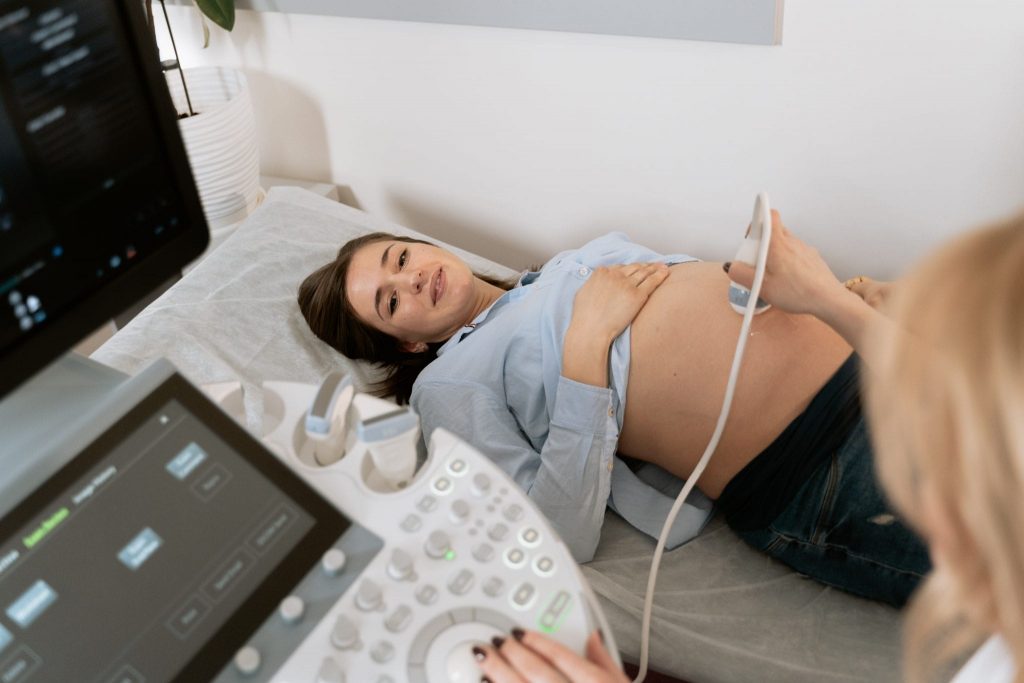
Diagnostics during pregnancy includes scheduled and unscheduled ultrasound screenings, which allow to determine the characteristics of the development of the fetus at different stages of pregnancy and to assess its course.
The first ultrasound during pregnancy is most often done to confirm it. Scheduled ultrasound screenings are carrying out in the first and second trimesters, and unscheduled ultrasound during pregnancy – according to the indications and recommendations of your gynecologist.
Scheduled and unscheduled diagnostic procedures and analyzes during pregnancy are aimed at timely diagnosis and correction of fetal pathologies and at maintaining the woman’s reproductive health.
What is ultrasound screening?
Ultrasound screening (prenatal screening) is a comprehensive medical examination of the fetus, carried out to identify any abnormalities in the normal course of pregnancy, including fetal anomalies.
This diagnostic is safe for both the expectant mother and the fetus, even if, for medical reasons, a woman has to do a frequent ultrasound during pregnancy.
How is ultrasound screening performing?
To conduct a screening ultrasound during pregnancy, a woman lies on a couch and exposes her abdomen. The doctor conducts a screening using a special sensor that allows you to display the area under study on the screen.
Diagnostics takes up to 20 minutes. During the ultrasound screening, if desired, the husband of the pregnant woman can be present.
The woman receives the results of ultrasound screening immediately after it. Only a doctor can decipher the diagnostic results. Therefore, after the examination, the patient needs to make an appointment with the gynecologist.
Based on the results of ultrasound screening, the gynecologist can refer the pregnant woman to additional studies, which include:
- Blood test.
- Doppler ultrasound during pregnancy (ultrasound examination of the intensity and velocity of blood flow in the vessels of the uterus, umbilical cord, and fetus).
- Ultrasound of the cervix.
- Other screenings.
How many times is ultrasound screening done?
For pregnant women are recommended to test ultrasound screenings in the first (11-13 weeks) and second (18-21 weeks) trimesters of pregnancy.
If desired, a woman can undergo ultrasound screening also in the third trimester to determine the presence of the fetus.
In addition, if necessary, the gynecologist can refer the pregnant woman for an unscheduled ultrasound examination (for example, for an unscheduled screening for multiple pregnancies).
Why is a first-trimester ultrasound screening performing?
Screening ultrasound of the first trimester (first screening) is performing from 11 to 13 weeks of pregnancy. Diagnostics allows:
- clarify the duration of pregnancy;
- determine the size of the fetus;
- assess the condition of the uterus and placenta;
- to measure the main parameters of the physical development of the fetus:
- the thickness of the collar space
- the distance from the coccyx to the crown of the head
- the length of the nasal bone
- the distance between the temporal bones
At what week of pregnancy is the second-trimester ultrasound screening performed?
Screening ultrasound of the second trimester (second screening) is performing at 18-21 weeks of pregnancy. Intrauterine ultrasound in the II trimester shows:
- the degree of maturity of the placenta;
- the location and size of the internal organs of the fetus;
- the amount of amniotic fluid;
- possible threats of termination of pregnancy (hypertonicity of the uterus, oligohydramnios).
Terms of screening ultrasound of the third trimester
Screening ultrasound of the third trimester (third screening) is performing at 30-34 weeks of pregnancy. Diagnostics allows you to determine:
- the location of the baby in the uterus;
- the amount of amniotic fluid;
- the presence of pathologies of the umbilical cord (abnormal length and thickness of the umbilical cord, its attachment to the placenta, entanglement of the umbilical cord around the body, limbs, and neck of the child);
- height, weight, head circumference, and size of the limbs of the fetus;
the state of the child’s internal organs;
condition of the cervix.
Picture Credit: Pexels
